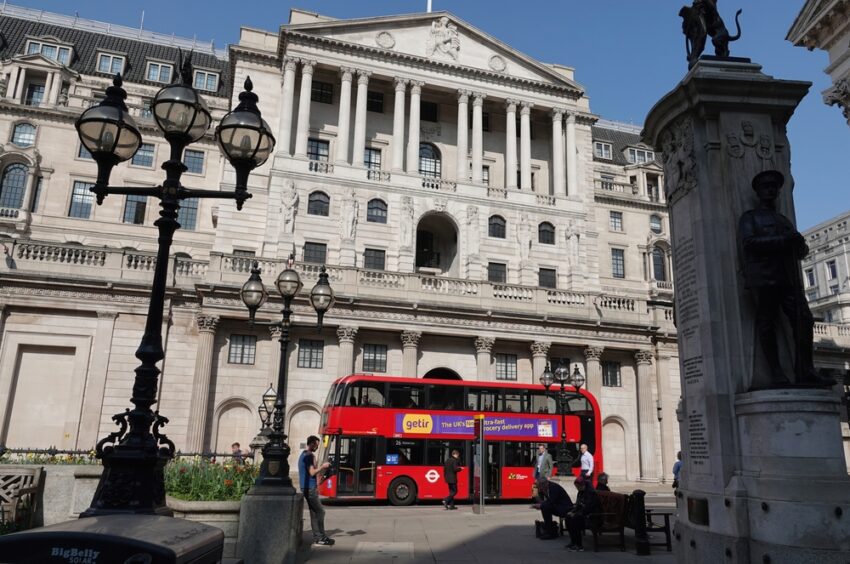Goldman Sachs forecasts that the Bank of England may lower interest rates to 2.75% by November 2025. As inflation shows signs of easing, this possibility arises amid varied expectations within financial markets.
Currently, the UK base rate stands at a restrictive 5%, with ongoing discussions on how aggressively the Bank of England should act to reduce rates. As inflation eases, projections indicate a significant decline, offering potential relief to businesses and consumers. Explore the challenges and implications of these predictions.
Goldman Sachs and Market Expectations
Goldman Sachs projects a notable decline in the UK’s base interest rate, potentially reaching 2.75% by next year. This dovish outlook arises from ongoing disinflation and signals from policymakers, contrasting sharply with the current base rate of 5%, deemed “notably restrictive”. Markets, however, predict a slower rate decline, settling at approximately 3.5%.
Aligning partially with Goldman Sachs, Deutsche Bank also anticipates quicker-than-expected rate cuts, albeit to a lesser extent, forecasting a 3% rate by early 2026. The financial markets expect the Bank of England to reduce the base rate by 25 basis points in both November and December, lowering it to 4.5%.
Understanding the Neutral Interest Rate
Determining the “neutral interest rate,” neither fueling nor constraining economic growth, poses significant challenges for policymakers. Goldman Sachs estimates the UK’s neutral rate at 2.75%, considering inflation, which presents complexities in a unique economic environment.
The UK’s economy navigates factors such as slow productivity growth, rising public debt, and an ageing population. The national debt-to-GDP ratio has surged, exerting further economic pressure, while upcoming fiscal policies, including potential public investments, aim to bolster long-term growth.
The intricacies of calculating the neutral rate require careful consideration. Misjudgments could either stifle growth or spur inflation, underscoring the importance of precise evaluation in the evolving economic landscape.
Inflation’s Influence
The unexpected drop in UK inflation, now at 1.7% annually, intensifies the debate on monetary policy within the Bank of England. This decline from a 2.2% rate in August amplifies expectations for adjustments in interest rates.
Various views within the Monetary Policy Committee highlight differing approaches. Andrew Bailey leans towards aggressive rate cuts, contingent on inflation stability, whereas Huw Pill prefers a cautious pace. These discussions, expected to continue during the IMF meetings, will shape future strategies.
As inflation eases, businesses and consumers closely monitor the Bank’s response, anticipating possible changes in monetary policy that align with global and domestic economic trends.
Economic Pressures and Fiscal Policies
The UK economy faces mounting pressure from complex factors, notably an ageing population and surging debt levels. The debt-to-GDP ratio, now nearing 100%, poses significant challenges to economic stability and growth.
Chancellor Rachel Reeves’s expected increase in borrowing aims to fund public investment, seeking to invigorate long-term growth despite not replicating past fiscal policies that disrupted markets.
Efforts to navigate these economic pressures involve thoughtful policy adjustments, highlighting the intricate balance required to manage fiscal challenges while pursuing sustainable growth.
The Bank of England’s Strategic Considerations
The Bank of England remains cautious in placing too much reliance on theoretical neutral rate estimates, contemplating the broader economic data and conditions influencing interest rate decisions.
Interest rates could potentially drop to 2.75% next year, emphasizing the Bank’s careful strategy in navigating economic circumstances. Businesses and individuals will be keenly observing these developments.
The cautious approach by the Bank reflects the need to align interest rate strategies with evolving economic data, ensuring balanced measures that support overall economic stability.
Concluding Thoughts on Rate Predictions
Interest rate forecasts serve as crucial indicators for business and consumer planning, shaping expectations and strategic decisions.
Understanding the dynamic interplay of inflation trends and economic conditions provides insights into potential future interest rate changes, supporting informed decision-making.
The analysis of potential UK interest rate changes highlights the complex interplay of economic factors influencing monetary policy. As inflation trends and fiscal conditions evolve, careful navigation of interest rate strategies will be crucial in supporting economic stability while fostering growth.

